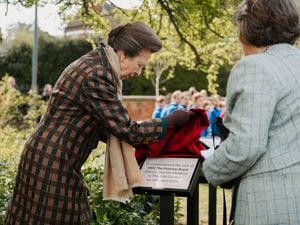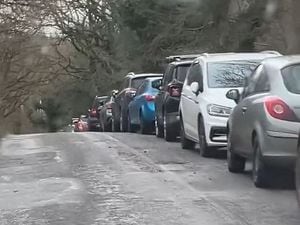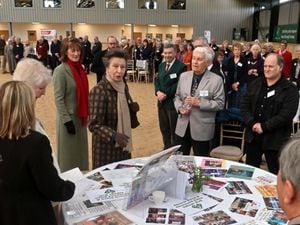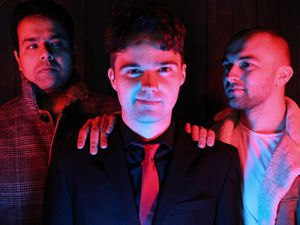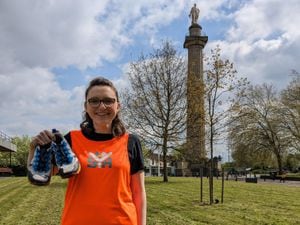1976 and the heat was on: How Shropshire sweltered in the great drought
Here's the weather forecast – and we warn you, you're not going to like it. Today will be hot, dry, and sunny. Tomorrow will be hot, dry, and sunny. The day after will be hot, dry, and ... well, you get the idea.
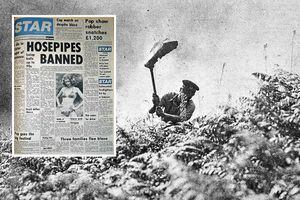
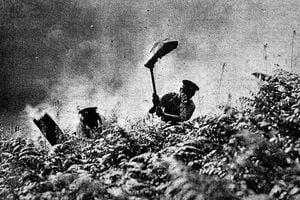
This was how things were 40 years ago, when Britain was enjoying a summer of all summers, a summer that has lasted long in the memory and smashed records.
And believe it or not, people got tired of it.
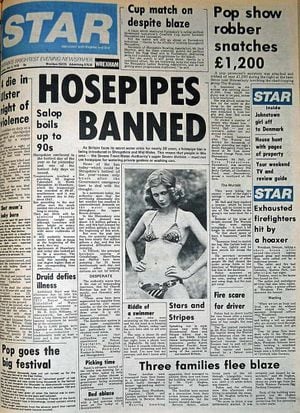
In the end Britons were praying for rain. When there was a spot or two during a cricket match at Lord's, the crowd cheered. Road surfaces melted, and railway lines buckled.
Shropshire's firefighters were worked off their feet with record numbers of calls as grassland and heathland burst into flame. They fought along with soldiers for days at Haughmond Hill, one of Shropshire's beauty spots, which was devastated, with over 150,000 trees destroyed and flames 50ft high.
There were hosepipe bans, and Shropshire was given permission to mobilise Green Goddess fire engines held in a strategic store in case of nuclear war.
In Mid Wales, the big drought brought back memories for people in the small village of Staylittle, in the hills between Llanidloes and Llanbrynmair. With the 11,000-million gallon capacity Clywedog reservoir at its lowest level, remains of hillside farms submerged nine years previously when the massive reservoir was created, had reappeared.
Similarly at Lake Vyrnwy remains of the houses and roads of the village that was flooded when the lake was created emerged as the water receded.
Gardeners were urged to let flowers die, and to use bath water to water trees and bushes. There were warnings sports grounds were turning into dust bowls – at the Bucks Head, only the newly-sown centre circle was watered.
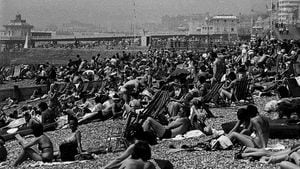
What are your memories of the great drought of 1976?
Do you have any photos from the time?
Email newsroom@shropshirestar.co.uk
Crisis meetings were held at Downing Street and ultimately the Government went so far as appointing a drought minister.
It did the trick. Not long after Denis Howell, the sports minister, was appointed to his new role, it started to pour, at last bringing an end to the glorious weather and easing the drought which came with it.
In the meteorological front line back then was well-known Lilleshall weatherman John Warner, whose readings during those days closely charted the impact on Shropshire.
"I seem to remember thinking that this can't go on," he said.
"We had temperatures of 30C (86F) or more for 11 consecutive days in Shropshire, which hasn't happened since."
Here are some of his figures which underline just how hot and dry it was for those 1970s Salopians. "The rainfall in June 1976 was 23mm, less than an inch – that was my reading at Lilleshall. In July it was only 15mm, and in August it was 15.7mm, so we had three months in which it was well below average. Then in September we had a whacking, with 158.6mm, which is over six inches in old money. Most of that fell in the second half of the month."
As for the heat in this heatwave, looking through his records he marked June 26 as the hottest June day on record at 28C, but had to update only three days later when that record was smashed, with 31C on June 29.
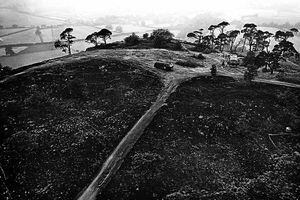
"Then it went on getting hotter. On July 3 it was 33C (91F)," he said.
This was the period of an 11-day unbroken heatwave of 30C-plus temperatures, with the July 3 figure being the hottest of all.
For peak heat, we've beaten that since in Shropshire – the 97F (36C) on August 3, 1990, was the county's hottest day since records began in 1903 – but in terms of consistently high temperatures and sunny days, Shropshire has never seen the like since 1976.
While Shropshire had it hot, some had it even hotter – the south east had highs of 32C for 15 consecutive days.
And if you think June 2016 was a bit wet in comparison, you'd be right.
"We've had over 100mm of rain, which is a lot for June," said Mr Warner, who still has his weather station today.
But let's relive the beginnings of that 1976 heatwave. On June 23 that year daytime temperatures reached 90F in Marham, Norfolk, although Shropshire was lagging behind at just 77F. Then, next day, thermometers in Shropshire were hovering around the 80F mark and there was 15 hours of sunshine.
The heat was on.
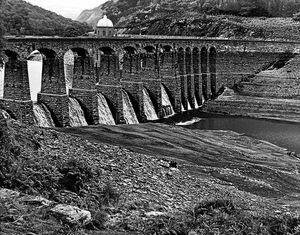
Drink sales at the Carrefour hypermarket in Telford town centre were at least three times higher than normal, and it sold out of cream.
Lager sales across the county rocketed, and ice cream makers like Mor-Isis in Telford battled to keep up with demand. Queues formed at Market Drayton swimming baths.
On the first weekend of the heatwave people paddled and swam in rivers, pools, reservoirs and quarries, bringing tragedy, with three drownings in Shropshire, and an 11-year-old girl narrowly avoiding being a fourth, being rescued after being carried over the weir in Shrewsbury.
With unprecedented demand for water, a hosepipe ban for Shropshire and Mid Wales was announced on July 3.
And so continued the first peak of the heatwave, with day after scorching day, although when Shropshire broke through the 90F barrier on July 3 it was the last county, apart from Durham and Northumberland, to do so.
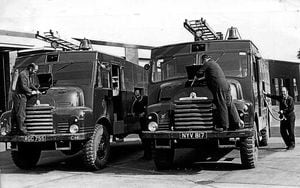
Things were to cool down for a few weeks, relatively speaking, but then August brought renewed crisis.
For Shropshire's fire service, Monday, August 23, was its busiest day ever with a record number of calls. At one point every single fire appliance in Shropshire was committed. In an unprecedented move, the county fire service put out a TV and radio appeal for off-duty firefighters.
A major fire at Haughmond Hill was just the biggest of many. On August 24, they dealt with 62 incidents, four times normal levels.
There was talk of bringing water from Scotland, and using North Sea oil rigs to drill for water in coastal areas. Although June and July didn't break any sunshine records, when taken together with August it was the sunniest summer ever. Enter Denis Howell on the scene. Then, on August 28, parts of Shropshire had their first rain since August 6. However, the spell was broken, and both September and October proved to be markedly wet.
We are linking up with BBC Radio Shropshire to bring back memories of the glorious summer of 1976. The radio station will, 40 years on, be looking regularly at those times, not just with that heatwave, but with the fashion, music, food, toys, the news, movies and television, and so on, and will feature listeners' pictures on its Facebook page.
Julia Morgan of BBC Radio Shropshire is, for instance, trying to track down people with cars from 1976, and hear from people who worked in local hospitals – as well as from local ice cream firms. There's a special email – it's summerof76@bbc.co.uk
Oh, and another thing. If we haven't already made you jealous about that great summer, petrol was 80p a gallon. That's about 18p per litre.

